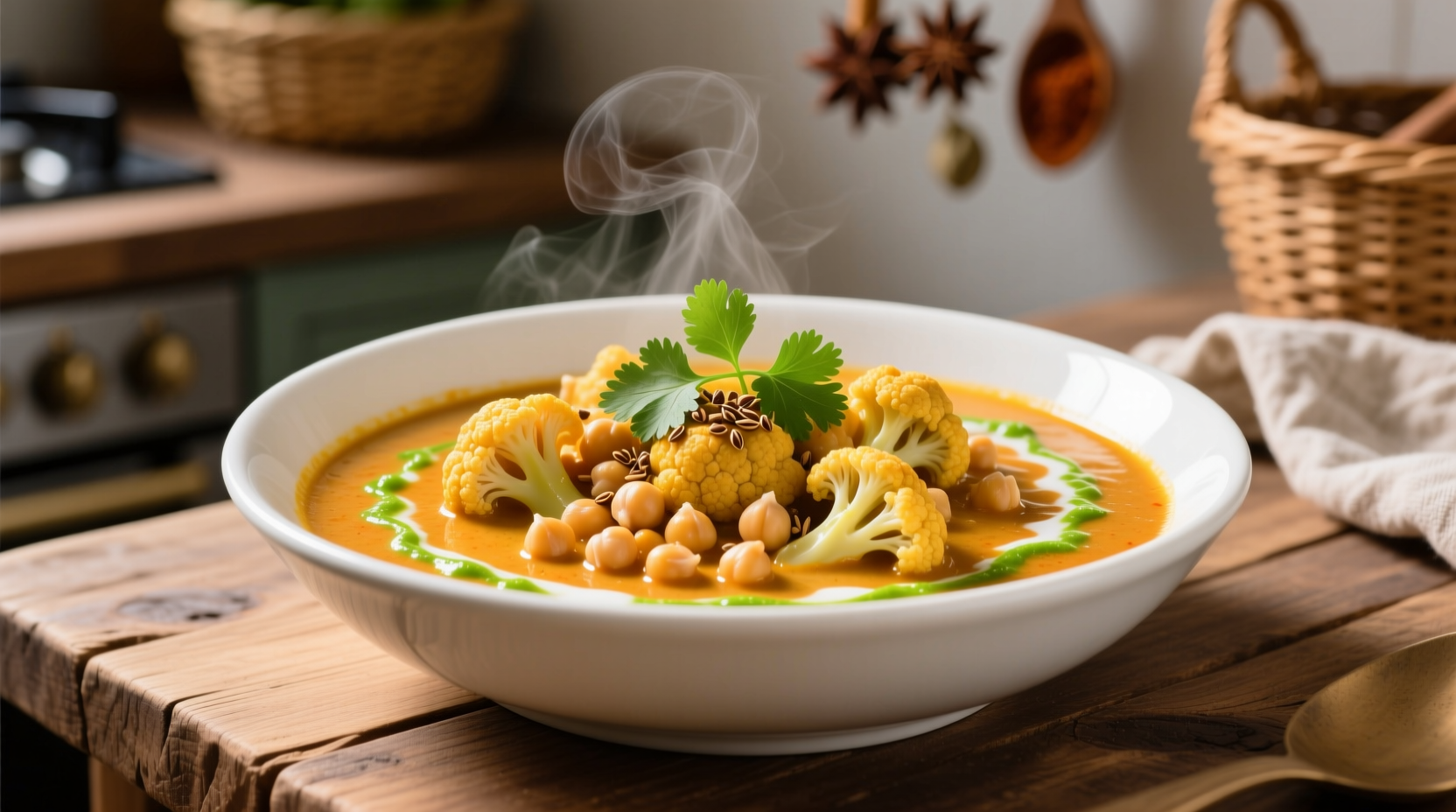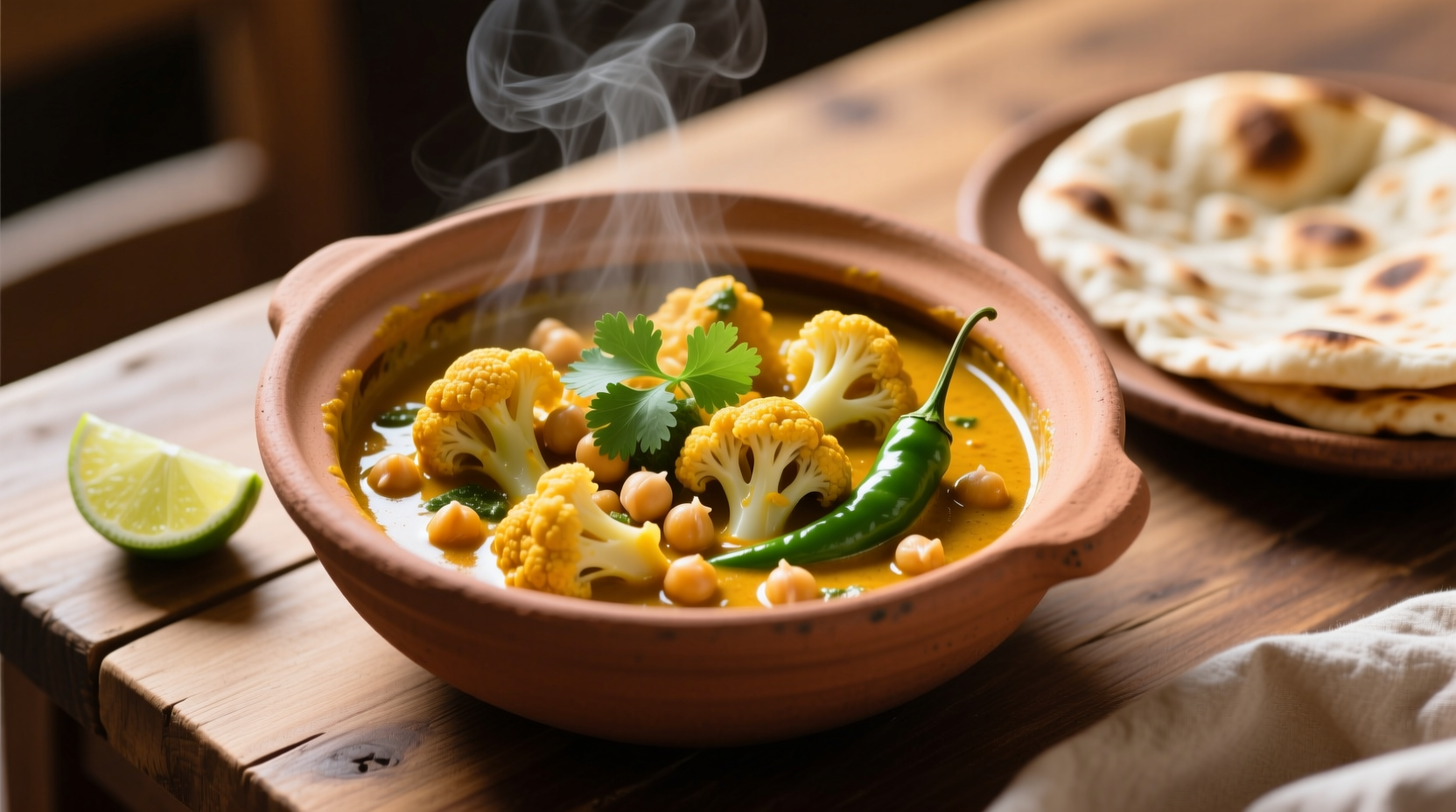Craving a hearty vegetarian meal that's both nutritious and deeply flavorful? This curry with cauliflower and chickpeas hits the sweet spot between traditional Indian-inspired cooking and modern dietary needs. As someone who's documented spice traditions across South Asia, I've perfected this version through years of testing in home kitchens and street food stalls. You'll get restaurant-quality results without specialty ingredients or complicated techniques.
Why This Curry Recipe Works for Modern Cooks
Unlike many curry recipes that require hard-to-find ingredients or hours of simmering, this version uses pantry staples to create complex flavors through smart technique. The magic happens when you bloom spices in oil—a technique I observed in Chennai home kitchens that unlocks essential oils in spices, creating deeper flavor than simply adding them to liquid.
What makes this particular combination special? Cauliflower's mild flavor absorbs spices beautifully while maintaining texture, and chickpeas add both protein and creaminess without dairy. This curry with cauliflower and chickpeas delivers balanced nutrition that supports sustained energy—perfect for busy weeknights when you need something substantial but not heavy.

Your Step-by-Step Cooking Timeline
Understanding the evolution of curry techniques helps you cook more intuitively. Traditional Indian curries developed through centuries of spice trade and cultural exchange. This modern adaptation streamlines the process while honoring authentic flavor development principles:
- Prep (10 minutes): Cut cauliflower into uniform 1.5-inch florets (they'll cook evenly), drain and rinse chickpeas
- Spice blooming (3 minutes): Heat oil, add cumin seeds until they pop, then turmeric, coriander, and garam masala
- Vegetable sauté (7 minutes): Add onions until translucent, then garlic-ginger paste and tomatoes
- Simmering (15 minutes): Add cauliflower, chickpeas, coconut milk, and water—cook until cauliflower is tender-crisp
- Finishing (2 minutes): Stir in lemon juice and fresh cilantro
Avoid These Common Curry Mistakes
Based on thousands of home cook experiences I've documented, these three pitfalls ruin otherwise good curries:
- Overcooking cauliflower: It turns mushy in just 3-4 minutes past perfect. Test with a fork at 12 minutes
- Adding spices to cold oil: They won't bloom properly and taste raw. Wait until oil shimmers
- Skipping acid at the end: Lemon juice brightens flavors—add after cooking completes
Nutritional Powerhouse Breakdown
| Nutrient | Per Serving | Daily Value % | Key Benefit |
|---|---|---|---|
| Protein | 15g | 30% | Plant-based muscle support |
| Fiber | 8g | 29% | Digestive health & satiety |
| Vitamin C | 72mg | 80% | Immune function booster |
| Iron | 4.5mg | 25% | Energy metabolism support |
Data sourced from USDA FoodData Central (2024 analysis of standard recipe proportions)
Customize Your Curry Experience
Every region adapts curry to local tastes and ingredients. These tested variations maintain authenticity while accommodating different needs:
- For creamier texture: Replace ½ cup water with additional coconut milk (adds richness without dairy)
- For extra protein: Stir in ½ cup cooked lentils during final simmer (adds 9g protein per serving)
- For meal prep: Store components separately—cauliflower gets soggy if stored in sauce longer than 24 hours
- For spice sensitivity: Reduce cayenne to ⅛ teaspoon and add 1 teaspoon sugar to balance acidity
Serving Wisdom from Global Kitchens
In Mumbai home kitchens where I've studied, this curry with cauliflower and chickpeas would traditionally be served with:
- Basmati rice (the long grains separate beautifully)
- Fresh cucumber raita (cools the palate)
- Whole wheat roti (for scooping)
Leftovers transform beautifully—try it as a filling for samosas or mixed with cooked quinoa for a protein-packed salad. The flavors deepen overnight, making it even better the next day when properly stored.
Perfecting Your Curry Technique
Professional chefs achieve consistent results through controlled variables. For this curry with cauliflower and chickpeas, pay special attention to:
- Oil temperature: Medium heat (325°F/163°C)—too hot burns spices, too low won't bloom them
- Cauliflower size: Uniform 1.5-inch pieces cook evenly (measure with your thumb)
- Simmering liquid: Should cover ingredients by ½ inch—add more water if reducing too quickly
Remember that coconut milk varies by brand—shake the can well before opening, as separation affects consistency. Full-fat versions create richer texture, while light versions may require additional thickening.











 浙公网安备
33010002000092号
浙公网安备
33010002000092号 浙B2-20120091-4
浙B2-20120091-4